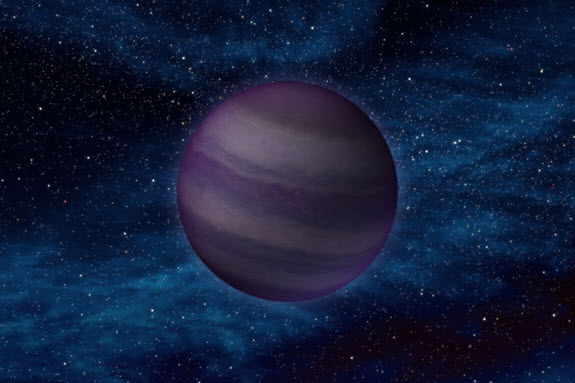From the edges of a vast crater on Mars to a distant planet that has to be one great big diamond, it has been a remarkable week in space for the denizens of planet earth.
NASA showed off a portfolio of images from its robot Rover Opportunity, which has completed a three-year, 21-kilometre, solar-powered crawl across Meridiani Planum, the equatorial plain, when after one last lunge, the dunes fell away and the mission scientists beheld the edge of the enormous Endeavour Crater and its guardian peaks.
Here lies clay-like minerals detected from orbit, which seem to be as old as the time when a young Mars may have been a world with a denser atmosphere and alkaline seas.

At the edge of the Martian abyss NASA: Mars Rover Opportunity
Mars keeps dealing strange clues to science as to its past, including an active methane cycle. Something, perhaps something “alive” is constantly replenishing the methane in the thin Martian atmosphere of today. Opportunity isn’t equipped to look for microbes, but it can scratch around the edges of ancient high-water lines if it survives its descent into the basin. This planetary equivalent of a grand voyage to the edges of the unknown on a medieval map continues, at the rate of a few metres per day, broadcast live to all who are exceedingly patient and command NASA to reveal the Mars Rover Opportunity navigation images.
To imitate the cartographers of old: Here theyre be not tygers, perchance, but fossils!
The diamond planet is about 4000 light years away. It was detected by a team at Melbourne’s Swinburne University of Technology in a very close orbit around a tiny ultra-dense neutron star, the remnant of a once far larger star. And it has to be about as massive as Jupiter, yet about 20 times as dense, which astrophysicists say means its it primarily made up of very tightly compressed crystalline carbon, or diamond.
It begs to be called “Lucy”, who was in the sky with diamonds in The Beatles era.
Also this week, a set of six ultra-cool “failed” stars or “brown dwarfs” have been found within 9-40 light years of earth.
One of them, catalogued as WISE 1825+2650 by the Wide Field Infrared Survey Explorer, is only room temperature, with a “surface” temperature of 25 degrees. Because brown dwarfs are never sufficiently massive to ignite and sustain hydrogen fusion like our sun, they must eventually get cooler and cooler, but until the WISE telescope was launched, it was impossible to find proof that they existed.

Y class brown dwarfs are the coldest star-like bodies known, with temperatures that can be even cooler than the human body. CREDIT: NASA/JPL-Caltech
With hundreds of extra solar system planets being discovered every year by robotic space telescope surveys, the power of the telescopes skews the results to favour any planets large enough to be seen, and close enough to a star in most cases to give themselves up to crude spectral analysis of their atmospheres.
This has lead to the finding of “unbelievable” planets that are red-hot gas giants like Jupiter or Saturn, yet so close to their suns that commonsense says they would evaporate in next to no time.
But because they are many times denser than the gas giants in our outer solar system, immense gravitational forces keep them bound up, which results in planets that may comprise paradoxically red-hot ice that is so compact that even at 1000 degrees, it cannot explode apart because of the grip exerted by its gravity.
This has filled the stellar systems we can currently see with monstrous objects that defy the conventions seen at play in our solar system.
Rounding out the discoveries of just one week, astronomers “detected” a star being ripped apart by a black hole at the centre of a distant galaxy. They “saw” it only because of a massive flow of radiation detected as coming from an area where a star had been rotating around the unseen black hole at a high fraction of the speed of light.
And, as a mind bender, black holes don’t, in lay terms, consume light so much as they distort the very shape of space so much that they eat time. It is the same relativistic effect as that which would make a clock in a starship approaching the speed of light seem to slow down. If you were near that black hole it would destroy you, in the blink of an eye, yet one that lasted for eternity.








Death by black hole would be the closest thing to a real Hell this universe could produce. Thanks for this article, information like this is just absolutely fascinating.
ANd Arthur C Clarke foresaw it in 2061 🙂
from wiki
FYI, on Madonna King’s breakfast program on ABC612 she had a phone-in competition on the best name for the diamond planet. I didn’t wait around to hear the winner (it would be on the website) but “Lucy” and “Bling” were the shortlisted ones.
We are truly living in a Golden Age of Science. It such a pity a minority want to haul us back to the Dark Ages.
“The fact that we live at the bottom of a deep gravity well, on the surface of a gas covered planet going around a nuclear fireball 90 million miles away and think this to be normal is obviously some indication of how skewed our perspective tends to be. — Douglas Adams” 😉